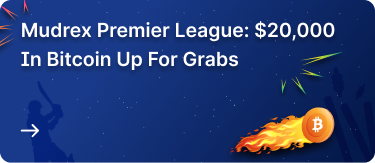Geth(Go-Ethereum) Explained
Geth (Go-Ethereum) is a crucial component of the Ethereum ecosystem. As a command-line interface, Geth provides a gateway for users and developers to interact with the Ethereum blockchain. It serves as a robust platform for running Ethereum nodes, executing smart contracts, and managing digital assets.
Understanding Geth’s core functionalities is essential for navigating the complex world of decentralized applications (dApps) and blockchain technology.
What is Geth (Go Ethereum)?
Geth, a Go-Ethereum implementation, is a software client facilitating interaction with the Ethereum network. Developed using the Go programming language, Geth serves as a gateway to the decentralized world of Ethereum. By establishing a connection to the Ethereum blockchain, users can access its functionalities and participate in various network activities.
Origin of Geth
Geth, a cornerstone of the Ethereum ecosystem, traces its origins to 2014 under the guidance of its creator, Jeffrey Wilcke. Initially conceived as a user-friendly interface to the complex Ethereum network, Geth has evolved into a robust and versatile platform.
Its design philosophy prioritized accessibility, catering to both novice and seasoned developers. By providing a seamless onramp to the Ethereum blockchain, Geth has played a pivotal role in fostering the network’s growth and adoption.
The software’s emphasis on user experience and its robust feature set have contributed to its widespread utilization within the Ethereum community. As a result, Geth has solidified its position as a leading Ethereum client, powering a multitude of applications and services built on the platform.
ALSO READ: What Is Ethereum Explained With How It Works & Its Purpose
How to Use Geth (Go Ethereum)?
1. Download and Install Geth: Head over to the official website (https://geth.ethereum.org/ ) to download and install Geth, the software client that allows you to interact with the Ethereum network.
2. Sync with the Blockchain: This is a crucial step, but be prepared for some patience as it can take a while for Geth to synchronize your local copy of the entire Ethereum blockchain.
3. Create an Account: Once synced, you can create an Ethereum account. This account acts as your digital address on the network, allowing you to receive and send Ether (ETH), the native cryptocurrency of Ethereum. It also serves as your key to interact with decentralized applications (dApps) and smart contracts.
4. Become a Validator Node (Optional): If you have the technical expertise and appropriate hardware resources, you can take your participation to the next level and contribute to network security by running a validator node. Validator nodes play a crucial role in verifying and validating transactions on the Ethereum network.
Key Features of Geth (Go Ethereum)
Here are the key features of Geth that have made it a cornerstone of Ethereum.
1. Geth Client
Geth, a Go-language implementation, serves as a software client facilitating user interaction with the Ethereum network. It acts as a gateway to access and participate in the decentralized Ethereum ecosystem.
2. Command-Line Interface (CLI)
Geth employs a command-line interface to provide users with control over various network interactions. Through a set of commands, users can execute transactions, manage accounts, and query network data.
3. Consensus Mechanism Support
Geth offers compatibility with both Proof of Work (PoW) and Proof of Stake (PoS) consensus mechanisms, demonstrating its adaptability to the evolving Ethereum ecosystem. This flexibility allows users to participate in different network configurations.
4. Integrated Ethereum Wallet
Geth incorporates a built-in wallet for securely storing Ether and other Ethereum-based tokens. This feature simplifies the management of digital assets within the Geth environment.
5. JSON-RPC and Web3.js Integration
Geth exposes a JSON-RPC API, enabling developers to interact with the Ethereum network programmatically using various programming languages. Additionally, it supports the web3.js library, providing a JavaScript-based interface for simplifying Ethereum development.
How Does Geth (Go Ethereum) Work?
Step 1. Installation and Synchronization
The process begins by acquiring the Geth software from the official website and installing it on your system. Once installed, Geth initiates the synchronization process, downloading and verifying the entire Ethereum blockchain. This comprehensive dataset is essential for participating in the network.
Step 2. Account Creation and Management
Users can create multiple Ethereum accounts within Geth using key generation algorithms. Each account has a unique public address and a corresponding private key for securing funds. Geth provides tools for managing accounts, including viewing balances, sending transactions, and signing messages.
Step 3. Transaction Processing
Users can create and submit transactions through Geth, specifying the recipient address, amount of Ether, and any associated data. Geth validates the submitted transaction by checking for sufficient funds, correct signatures, and adherence to network rules.
Step 4. Smart Contract Execution
Geth allows developers to deploy smart contracts to the Ethereum blockchain. These contracts are essentially self-executing pieces of code with specific conditions. Users can interact with deployed smart contracts by sending transactions that trigger contract functions.
Step 5. Node Operation (Optional)
Users can choose to run a full node, contributing to network security and decentralization by storing and validating the entire blockchain. For users with limited resources, a light node can be used, which downloads only the latest block headers and relies on other nodes for transaction data.
Step 6. API Interaction
JSON-RPC Interface: Geth provides a JSON-RPC API, allowing developers to interact with the Ethereum network programmatically. This enables building applications and tools that interact with the blockchain.
Limitations of Geth (Go Ethereum)
Geth, while a robust Ethereum client, presents several challenges. Here are the major limitations offered by Go Ethereum.
- Geth, while optimized for the Ethereum blockchain, exhibits limited interoperability with other blockchain networks. This specialization, while beneficial for Ethereum-centric operations, can hinder its utility in a broader blockchain ecosystem. Users seeking to interact with multiple blockchains might encounter challenges when employing Geth.
- Running a Geth node demands significant computational resources, including processing power, storage, and memory. The synchronization process with the Ethereum network can be particularly resource-intensive. These requirements can pose limitations for users with constrained hardware capabilities or those operating in environments with limited resources.
- Geth’s reliance on user-managed private keys for security introduces inherent risks. The safeguarding of these keys is paramount, as their compromise could lead to significant financial losses. Additionally, the evolving threat landscape necessitates continuous vigilance against potential vulnerabilities in the Geth software itself.
- As the Ethereum network grows, Geth may encounter scalability limitations. Processing increasing transaction volumes and handling the expanding state can strain the node’s capacity. This can result in slower transaction processing times and reduced network responsiveness.
- Configuring and maintaining a Geth node can be complex, requiring technical expertise. Users may face challenges in optimizing node performance, troubleshooting issues, and staying updated with network upgrades. This complexity can deter less technically inclined users from running their own nodes.
Conclusion
On a final note, Geth (Go Ethereum) stands as a vital software client that provides seamless access to the Ethereum network. Its user-friendly interface, robust features, and pivotal role in fostering Ethereum’s growth make it an indispensable tool for users and developers within the Ethereum ecosystem. To further explore the world of cryptocurrency and decentralized finance, consider downloading the Mudrex app for a comprehensive platform to manage and automate your crypto investments effectively.
FAQs
What is geth Ethereum?
Geth is a software client used to interact with the Ethereum blockchain. It allows users to run a full node, participate in mining, and execute smart contracts.
What is the Go implementation of Ethereum?
The Go implementation of Ethereum is referred to as Geth. It is written in the Go programming language and serves as a primary tool for interacting with the Ethereum network.
What are the requirements for Geth Ethereum?
Running a Geth node requires substantial computational resources, including processing power, storage, and memory. A stable internet connection is also essential for synchronizing with the Ethereum network.
What does geth mean?
Geth is an abbreviation for “Go-Ethereum,” indicating that it is a software implementation of the Ethereum protocol written in the Go programming language.
What are the two types of Ethereum?
There are two primary consensus mechanisms used in Ethereum: Proof of Work (PoW) and Proof of Stake (PoS). Ethereum transitioned from PoW to PoS in a process known as The Merge.





